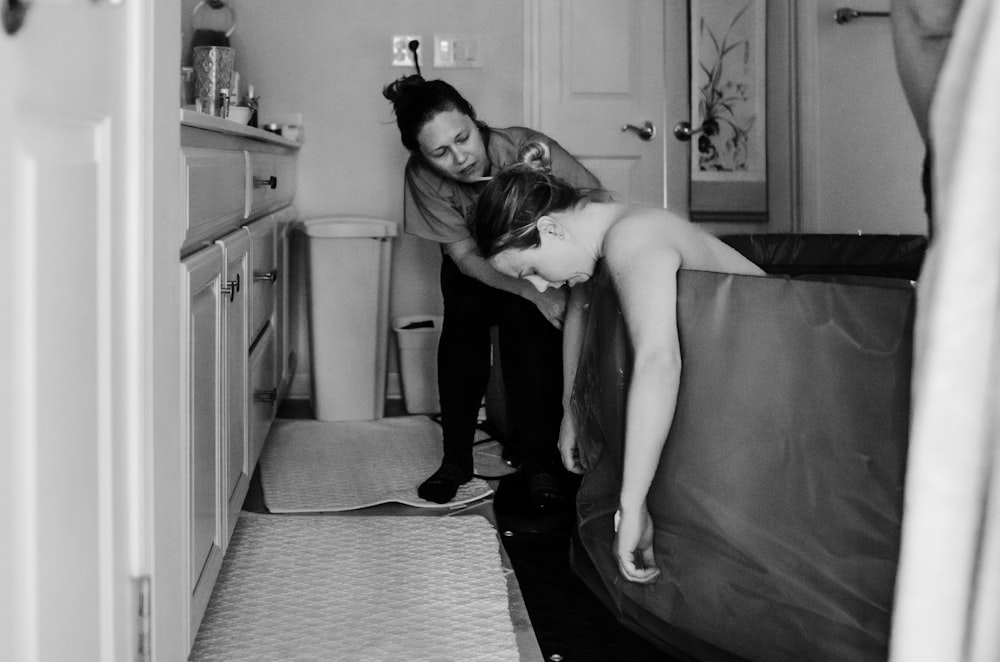
7 Childbirth Delivery Methods and Types (Part 1)
There are a lot of factors that will influence and affect childbirth. Each childbirth experience is different from another. Everyone will have different pain tolerance levels, but most can confirm that childbirth is a very painful experience. Still, it does not remain and can be alleviated with different painkillers.
Different methods of childbirth are available to choose from. Women will be able to choose whatever they feel will be more comfortable and their medical history. Let’s discover the different childbirth methods;

Natural ChildBirth
Natural childbirth was the only method of childbirth until 75 years ago. Through natural methods, there was no interference and very minimal invasive monitoring. Nowadays, if a woman wants to undergo natural childbirth, they should follow some classes to understand what they should expect.
It is becoming more common that women are looking forward to natural childbirth, so more classes are available on the matter. In these classes, you should expect sessions on breathing, labor, and different relaxation techniques.
Vaginal Delivery With No Medication
The birth method determines the microbiome or bacterial environment. Some evidence suggests that the formation of the baby microbiome is linked to the chance of having allergy disorders later in life, but the link isn’t apparent. This method is an advantage to both the baby and the mother. Both the mother and the baby benefit from a vaginal birth without drugs.
There are multiple benefits of vaginal delivery; infants born vaginally have fewer respiratory issues. Vaginal childbirth is associated with a lower risk of infection and a shorter stay in the hospital. Other advantages of vaginal delivery include the mother’s faster recovery and the avoidance of abdominal surgery and the hazards associated with a C-section.
However, there are also a few disadvantages to vaginal delivery, including tearing the perineum.
Home Birth
Homebirth is not very popular, but it is expected to become more common as it can be very relaxing for women with low-risk pregnancies. Conclusion: there is a need for a lot of mental preparation, which will help promote easy labor and delivery.
During each home birth, there will be a need for different professional midwives so they can help during the process.
As mentioned above, home birth is more relaxing than other childbirth methods, but there are many advantages; you are in the comfort of your home, and everything is immediately available. You can also vocalize when giving birth as you are in your own house.
The disadvantages of home birth are that you will have to be transported to the hospital whenever there is an unexpected event, and it is also only for women who have low-risk pregnancies.
Lamaze Method
The Lamaze method is most recognized for its controlled breathing methods, incorporating several labor comfort tactics. Breathing practices promote relaxation and reduce pain perception. In addition to breathing, other aspects of birthing preparation are discussed. When possible, Lamaze is taught in a series of lessons attended by both the mother and her partner. The Lamaze technique does not expressly advise or condemn the use of medicines; rather, it aims to educate women about their alternatives to creating a birth plan tailored to their specific requirements.
Lamaze training provides the woman and her partner with various skills to help them naturally navigate labor and delivery. The Lamaze courses assist the couple prepare for their first few days and weeks together by teaching them what to expect. Breathing and relaxation techniques help minimize pain perception and keep labor going along.
It takes time to master the Lamaze method, one of its main drawbacks. Beginning in the second trimester of pregnancy, the couple must prepare ahead and attend classes.
Do you want to know more? Let us know in the comments if you want a part 2…
You May Also Like

Quasars: An Astronomical Enigma of Time
2021-08-24
The Strangest Planets In The Universe (Part 3)
2021-07-29


